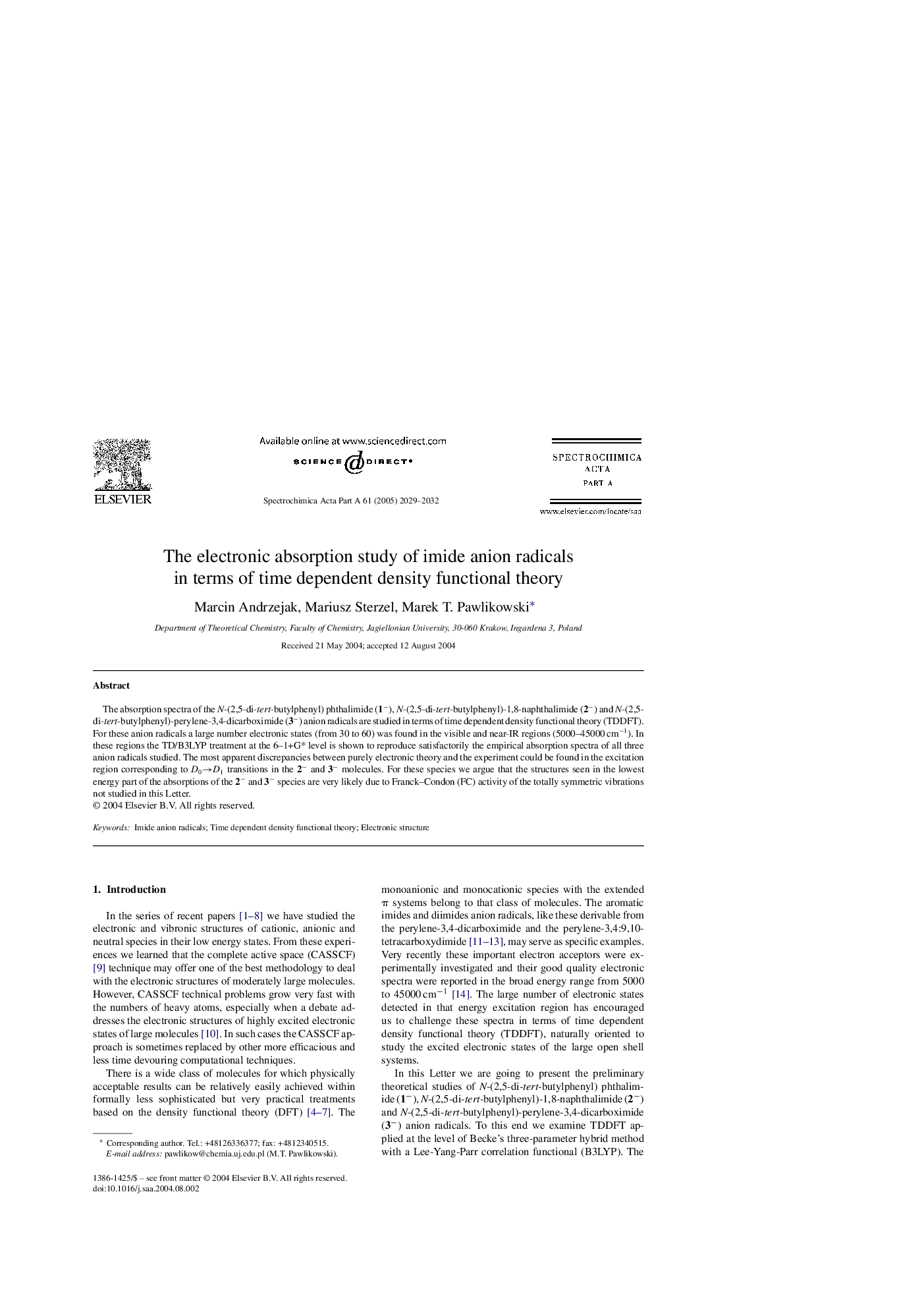| Article ID | Journal | Published Year | Pages | File Type |
|---|---|---|---|---|
| 1238889 | Spectrochimica Acta Part A: Molecular and Biomolecular Spectroscopy | 2005 | 4 Pages |
The absorption spectra of the N-(2,5-di-tert-butylphenyl) phthalimide (1−), N-(2,5-di-tert-butylphenyl)-1,8-naphthalimide (2−) and N-(2,5-di-tert-butylphenyl)-perylene-3,4-dicarboximide (3−) anion radicals are studied in terms of time dependent density functional theory (TDDFT). For these anion radicals a large number electronic states (from 30 to 60) was found in the visible and near-IR regions (5000–45000 cm−1). In these regions the TD/B3LYP treatment at the 6–1+G* level is shown to reproduce satisfactorily the empirical absorption spectra of all three anion radicals studied. The most apparent discrepancies between purely electronic theory and the experiment could be found in the excitation region corresponding to D0→D1 transitions in the 2− and 3− molecules. For these species we argue that the structures seen in the lowest energy part of the absorptions of the 2− and 3− species are very likely due to Franck–Condon (FC) activity of the totally symmetric vibrations not studied in this Letter.
